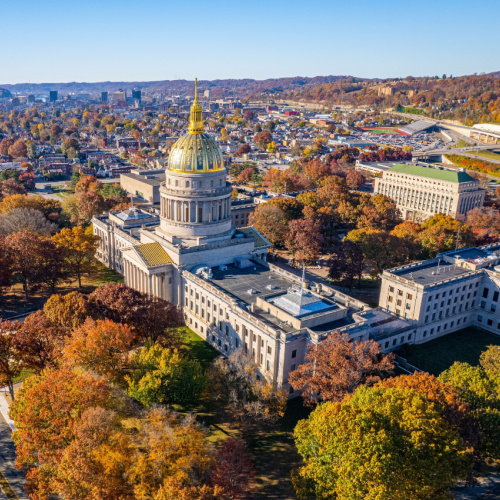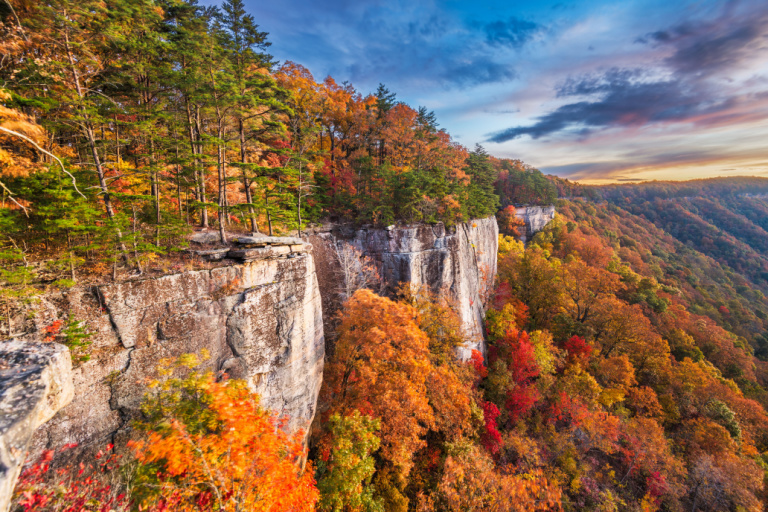
Wirestock Creators/Shutterstock
When Is the Best Time to Visit West Virginia?
The best time to visit West Virginia is during the shoulder seasons of April to June and September to October. During these months, the weather is generally mild and sunny, with fewer crowds and lower prices than during the peak summer season (July and August).
Here are some of the benefits of visiting West Virginia during the shoulder seasons:
- Mild weather: West Virginia has a humid continental climate, with hot, humid summers and cold, snowy winters. The shoulder seasons offer pleasant temperatures, making them ideal for sightseeing, exploring, and enjoying the outdoors.
- Smaller crowds: The shoulder seasons are less crowded than the peak summer season, so you’ll be able to enjoy West Virginia’s popular tourist attractions without having to deal with large crowds. This is especially important if you’re visiting popular destinations like New River Gorge National Park, Harpers Ferry National Historical Park, and Seneca Caverns.
- Lower prices: Prices for flights, accommodation, and activities are generally lower during the shoulder seasons than during the peak summer season. This means you can save money on your trip without having to sacrifice quality.
Here are some specific examples of how you can enjoy the most of West Virginia during the shoulder seasons:
- Spring (April to June): The weather in spring is typically sunny and mild, with occasional showers. This is a great time to visit for wildflowers in bloom, hiking in the national parks, and attending the many festivals that are held throughout the state, such as the Mountain State Forest Festival and the West Virginia Strawberry Festival.
- Autumn (September to October): The weather in autumn is also typically sunny and mild, with occasional showers. This is a great time to visit for leaf peeping in the Appalachian Mountains, attending the many festivals that are held throughout the state, such as the West Virginia State Fair and the Bridge Day Festival, and visiting the many pumpkin patches and haunted houses throughout the state.
While there are many great times to visit West Virginia, if you’re looking for the best weather and the most opportunities to enjoy the state’s natural beauty and attractions, then we recommend visiting during the shoulder seasons of spring and autumn.
 Average Temperatures by Month
Average Temperatures by Month
|
Jan |
Feb |
Mar |
Apr |
May |
Jun |
Jul |
Aug |
Sep |
Oct |
Nov |
Dec |
| Fahrenheit |
31°
|
34°
|
43°
|
54°
|
64°
|
72°
|
76°
|
75°
|
68°
|
56°
|
45°
|
35°
|
| Celsius |
-1°
|
1°
|
6°
|
12°
|
18°
|
22°
|
24°
|
24°
|
20°
|
13°
|
7°
|
2°
|
Climate in West Virginia
Summer Season in West Virginia
West Virginia's summer season, from June to August, offers warm and pleasant weather, with temperatures typically ranging from 75°F to 85°F. It's an ideal time for outdoor activities, exploring the state's natural beauty, and enjoying recreational opportunities in the Appalachian Mountains. The warm and sunny weather is perfect for experiencing the rugged charm of West Virginia.
Rainy Season in West Virginia
West Virginia experiences rainfall throughout the year, with slightly more precipitation in the late spring and early autumn months. While there isn't a distinct rainy season, visitors should be prepared for occasional showers, particularly in May and September.
Winter Season in West Virginia
West Virginia's winter season, from December to February, is cold, with temperatures ranging from 25°F to 40°F. This period is great for winter sports enthusiasts, with numerous ski resorts and opportunities for skiing and snowboarding in the state's mountainous regions. It's also a perfect time for holiday festivities and enjoying the serene beauty of West Virginia's landscapes.
Our Recommendations
| Destination |
Jan |
Feb |
Mar |
Apr |
May |
Jun |
Jul |
Aug |
Sep |
Oct |
Nov |
Dec |
| West Virginia |
 |
 |
 |
 |
 |
 |
 |
 |
 |
 |
 |
 |






